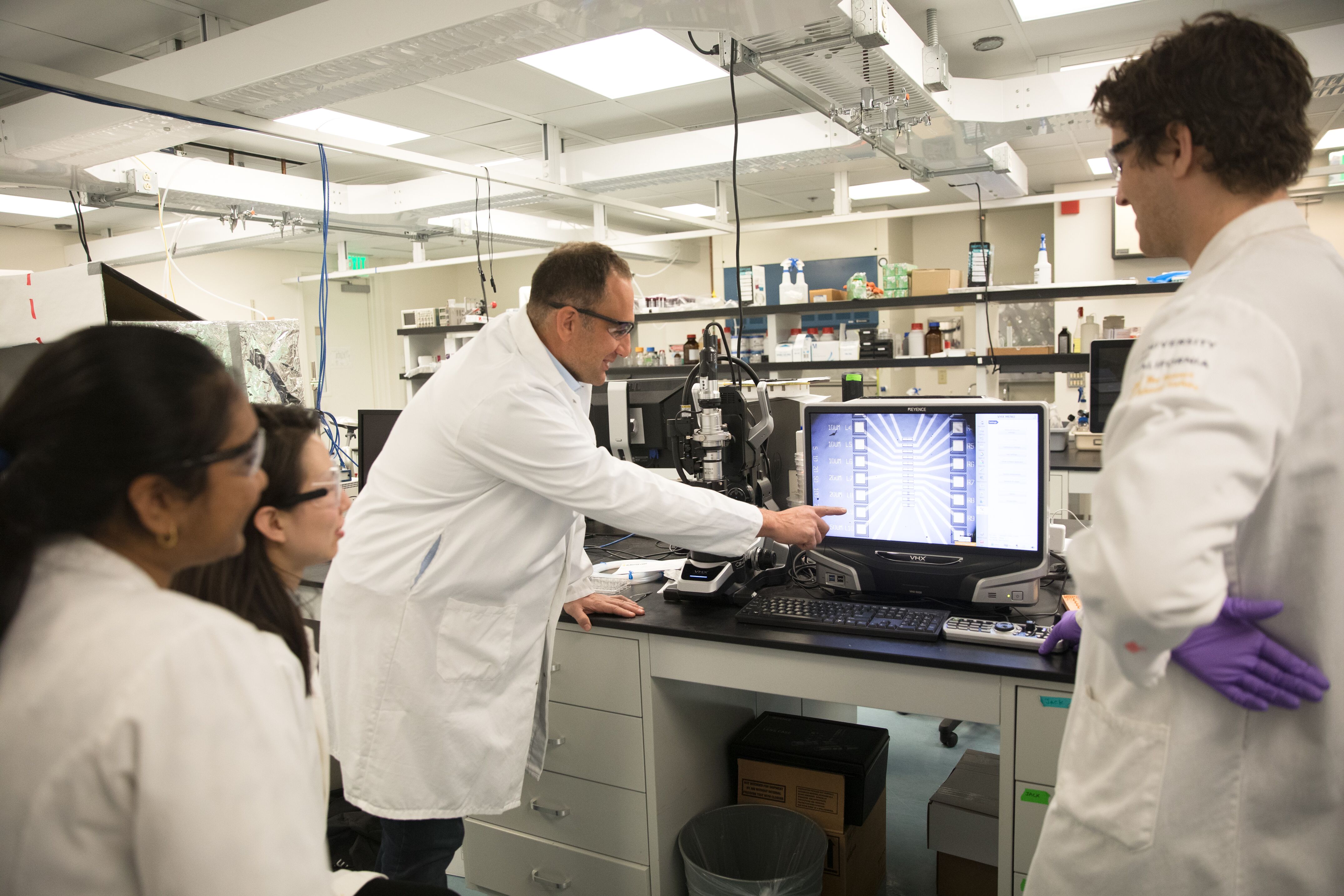Better biosensors
Efforts to improve sensors that can measure biological substances in or on the body—for monitoring glucose in diabetics, for example—face the challenge of working at the pH (hydrogen ion) levels found in living organisms. Human blood, sweat, and tears typically have a pH of around 7. “Unfortunately, many metals that are good at measuring substances like glucose are only effective at pH 11,” said professor of electrical engineering Marco Rolandi.
Rolandi and his team have now overcome the pH challenge. Their research leading to the patent-pending invention was published in July 2019 in the Nature journal Scientific Reports. By boosting the immediately surrounding pH, their millimeter-sized, metal-based biosensor can measure glucose levels in a solution that mimics body fluids.

The group created the biosensor by depositing small amounts of different metals on glass using a process called photolithography. Palladium metal increases the nearby pH by drawing hydrogen ions out of solution. The higher pH levels allow cobalt-oxide contacts next to the palladium to react with glucose and change oxidation state; the device measures the resulting current to determine the glucose concentration.
The metal-based biosensor could offer advantages over current glucose monitors for diabetics, which typically last only months as the enzymes on which they rely eventually degrade. In addition, such a device implanted in the body may be less tissue-reactive, Rolandi said.

